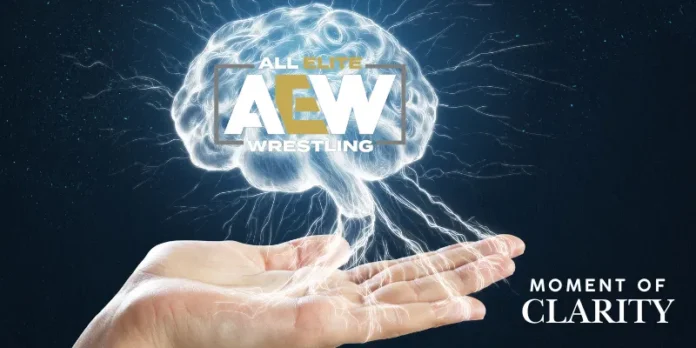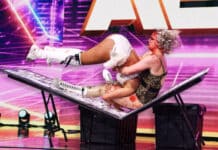
Wrestling Fans Never Wanted an Alternative. They Just Wanted WWE to Get Better.
Hi, I’m J.D. Spellman, and I am a long-time fan of watching sweaty people play fight in tight clothing. My general goal here is to weed through the false narratives and bad faith arguments against All Elite Wrestling in a time where online sentiment seems to be largely critical of it. As a fan of AEW, I want to present some real questions and pose honest issues with AEW itself, as well as the internet wrestling community.
AEW’s critics often misunderstand what it means to be a true alternative. This piece isn’t about defending every decision they’ve made—it’s about exploring why AEW faces an impossible paradox in the eyes of wrestling fans.
Eric Bischoff’s Weird Place in the Paradox
If you look at the wrestling landscape pre-Attitude/Nitro Era, it looked much different from today’s product. Whether it was WWF, NWA, Mid-South, or AWA, most wrestling shows followed a similar format.
Most of the action took place inside the ring. Promos were brief—often backstage or in vignettes—and rarely featured in-ring segments. Storylines were straightforward, podium interviews were common, and match cards were rarely announced in advance. An hour was enough for most broadcasts.
This all gradually changed with WCW and the birth of the nWo. As this captivating and “original” (though inspired by the UWF invasion of New Japan) storyline unfolded, it demanded more dialogue, more moving parts, and more drama. Slowly, there was a shift to longer opening in-ring promos, wilder stories across the entire card, and a focus away from wrestling and more on spectacle.
Once WCW started beating WWF in the ratings, McMahon adapted, and Raw began mirroring Nitro’s episodic TV format. This change became the new normal for mainstream pro wrestling.
And because of this shift, modern fans expect wrestling to look and feel a certain way. This is the paradox AEW exists within.
An Alternative Is Supposed to Be Different
Here’s a thought exercise: Watch a Dynamite from 2019-2021 and compare it to one today. Opinions will vary, but one could argue that today’s AEW is better—with bigger stars, higher production value, deeper storytelling, and arguably even better in-ring wrestling.
But in reality, AEW hasn’t changed much since its inception. They are, by definition, an alternative. Alternative doesn’t just mean “another option” – it means different.
Burger King isn’t an alternative to McDonald’s; it’s a competitor. Coke and Pepsi? Competitors. AEW, however, operates more as an alternative than a direct competitor to WWE.
AEW still prioritizes in-ring wrestling over drawn-out promos. The matches are faster, harder-hitting, and often more violent. The company acknowledges and collaborates with other promotions worldwide—something WWE has only recently started to embrace. The product is fundamentally different.
Yet, despite these distinctions, AEW still faces the impossible paradox of wrestling fans.
Cody Rhodes May Have Inadvertently Harmed Pro Wrestling
That’s a bold statement, but one worth revisiting in 5-10 years.
Cody Rhodes’ exit from AEW wasn’t just another talent departure—it changed the perception of AEW as a destination. While no one can truly say if Cody always intended to return to WWE, his decision to book himself out of the world title picture early on suggests he may not have envisioned AEW’s rapid growth.
As new stars arrived—Punk, Danielson, Cole—Cody became overshadowed in the company he helped build. And when he finally left, it gave WWE loyalists the perfect excuse to diminish AEW’s legitimacy.
Would the Punk/Elite fiasco have gone differently if Cody was still around? Maybe. He was a respected, stabilizing presence. If Cody had stayed, AEW might still have Punk, and the wrestling landscape today could be drastically different.
His departure also likely drew some fans away from AEW, reaffirming WWE as the “end goal” for major stars. If AEW were to fold in the future—whether due to declining numbers or a failed TV deal—WWE would completely dominate the industry, much like in the post-WCW era.
For fans who value variety, that should be a concern.
The Paradox: AEW’s Impossible Dilemma
AEW faces a conundrum:
If casual fans won’t naturally gravitate toward an alternative because they’ve been conditioned to enjoy a certain style, and if lapsed AEW fans now prefer WWE’s formula, how is AEW supposed to expand its audience?
And if they try to appeal to casual fans, wouldn’t they just become ‘WWE-Lite’ and alienate their core audience? This mistake killed early TNA.
How does an alternative product grow without losing what makes it alternative?
Even more frustratingly, AEW has already addressed many of the common criticisms:
✔ Running smaller venues? Done.
✔ Reducing roster size? Done.
✔ Scaling back excessive blood? Done.
✔ Improving production value? Done.
✔ Slowing down show pacing? Done.
✔ Increasing long-term storytelling? Done.
✔ Tony Khan calming down on social media? Done.
Despite these changes, many so-called “experts” continue to nitpick AEW without even watching the product. So at what point does AEW stop chasing validation from critics who will never be satisfied?
Final Thoughts
AEW’s paradox isn’t a flaw—it’s a reflection of what wrestling fans truly want. Do they actually want an alternative? Or do they just want WWE to be better?
Because if AEW disappeared, the industry wouldn’t be better off. It would be worse.
The real question isn’t whether AEW should change. It’s whether wrestling fans are ready to embrace an alternative that dares to be different.
– JD Spellman
email: [email protected]






